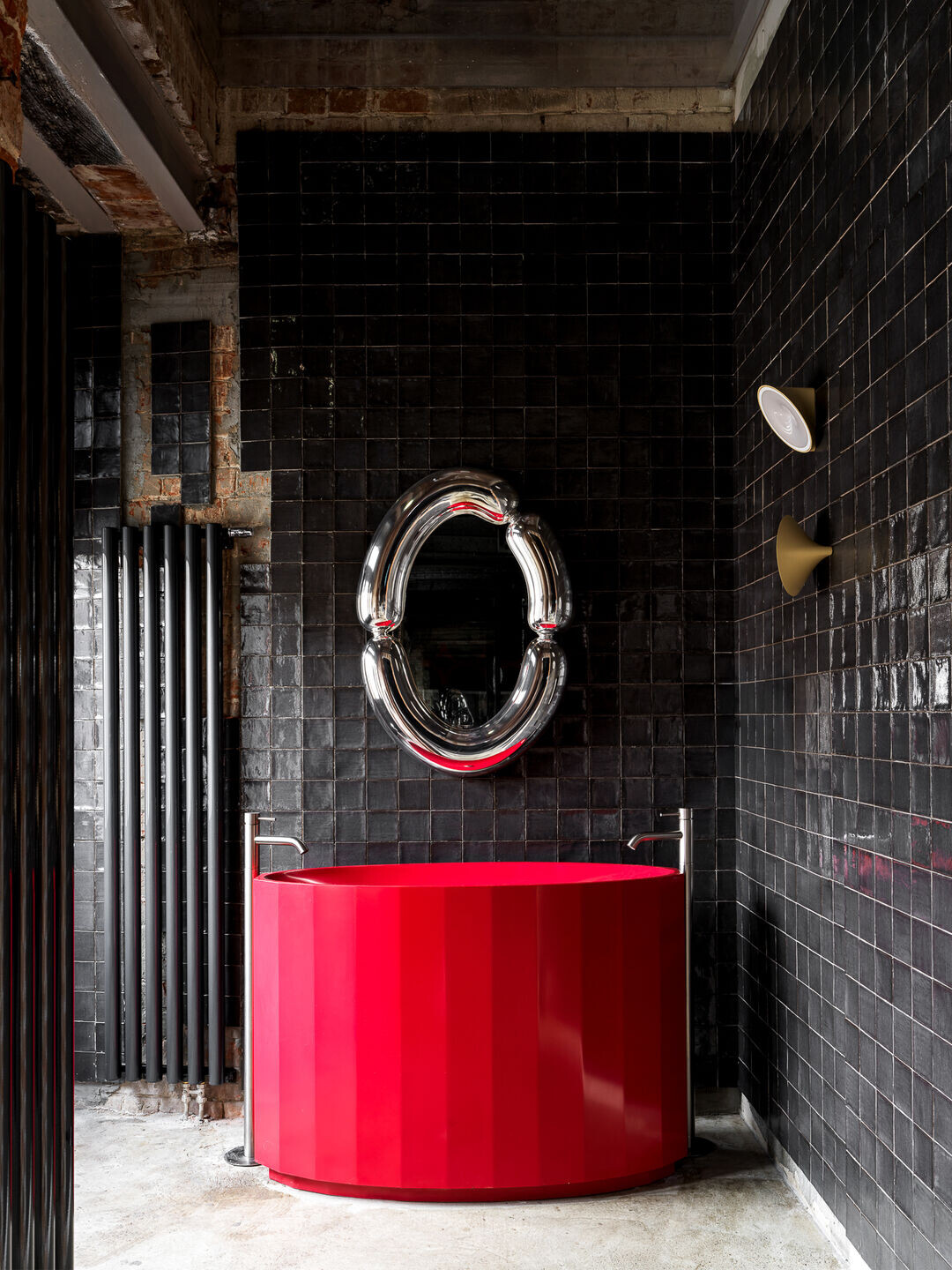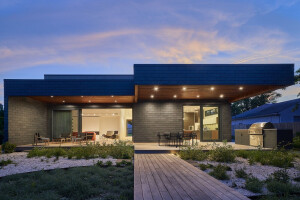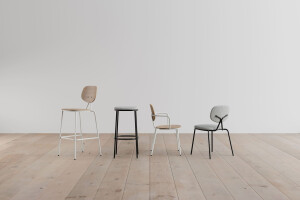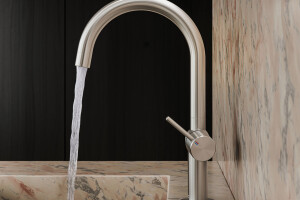The Receptor restobar, nestled in a charming 19th-century building in Tomsk, is a vibrant blend of history, art, and bold design. Created by interior designer Elena Rybalkina, the concept introduces a fresh twist to the city’s culinary scene.
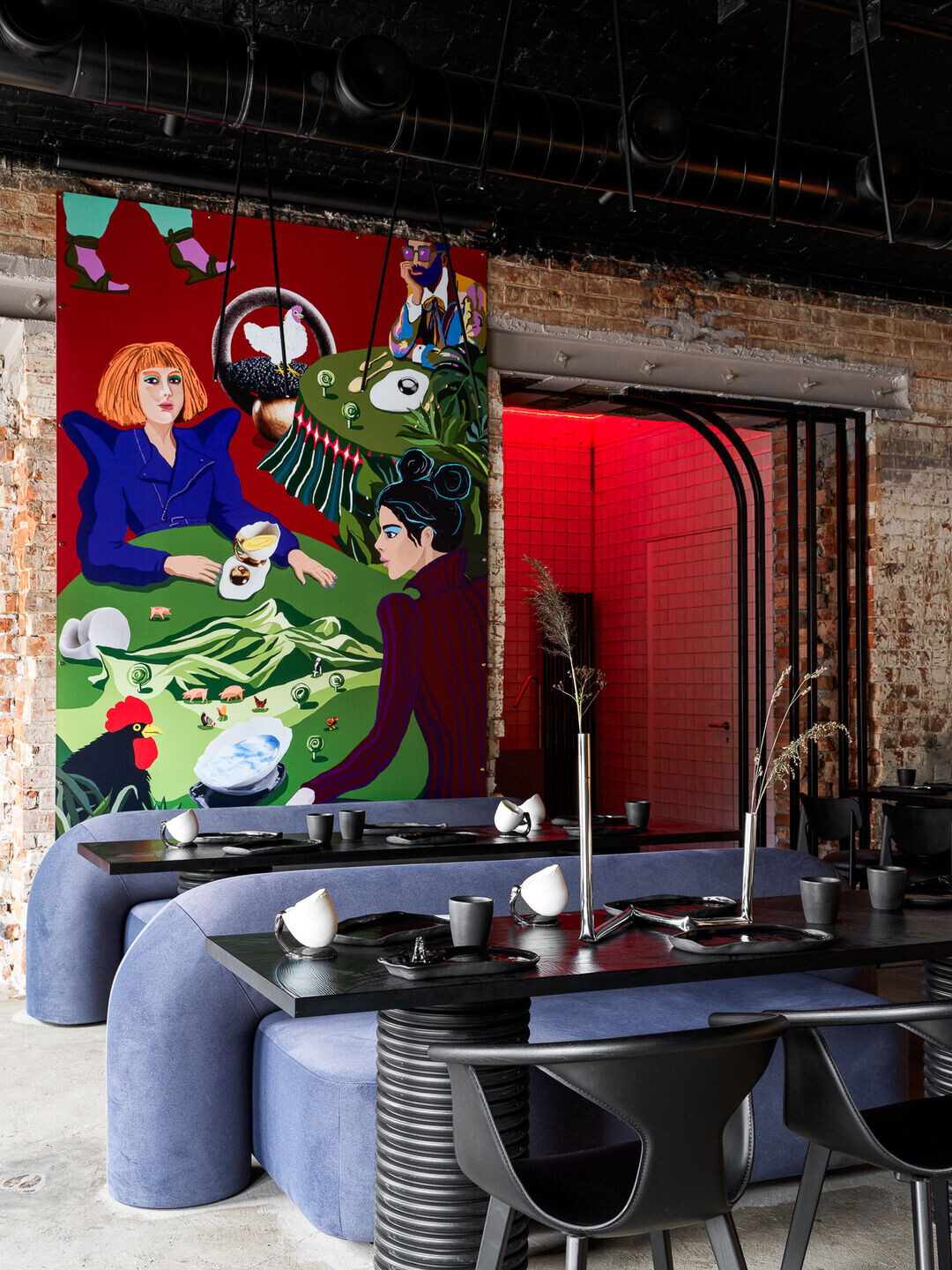
The project began with a seemingly simple yet ambitious brief from the client: to design a welcoming, airy, and distinctive space. The name “Receptor” wasn’t chosen by chance. In scientific terms, receptors are sensory structures that capture external and internal stimuli, transmitting signals to the nervous system. Inspired by this concept, Rybalkina envisioned an environment that would engage guests’ senses — taste, sight, and emotions — simultaneously.
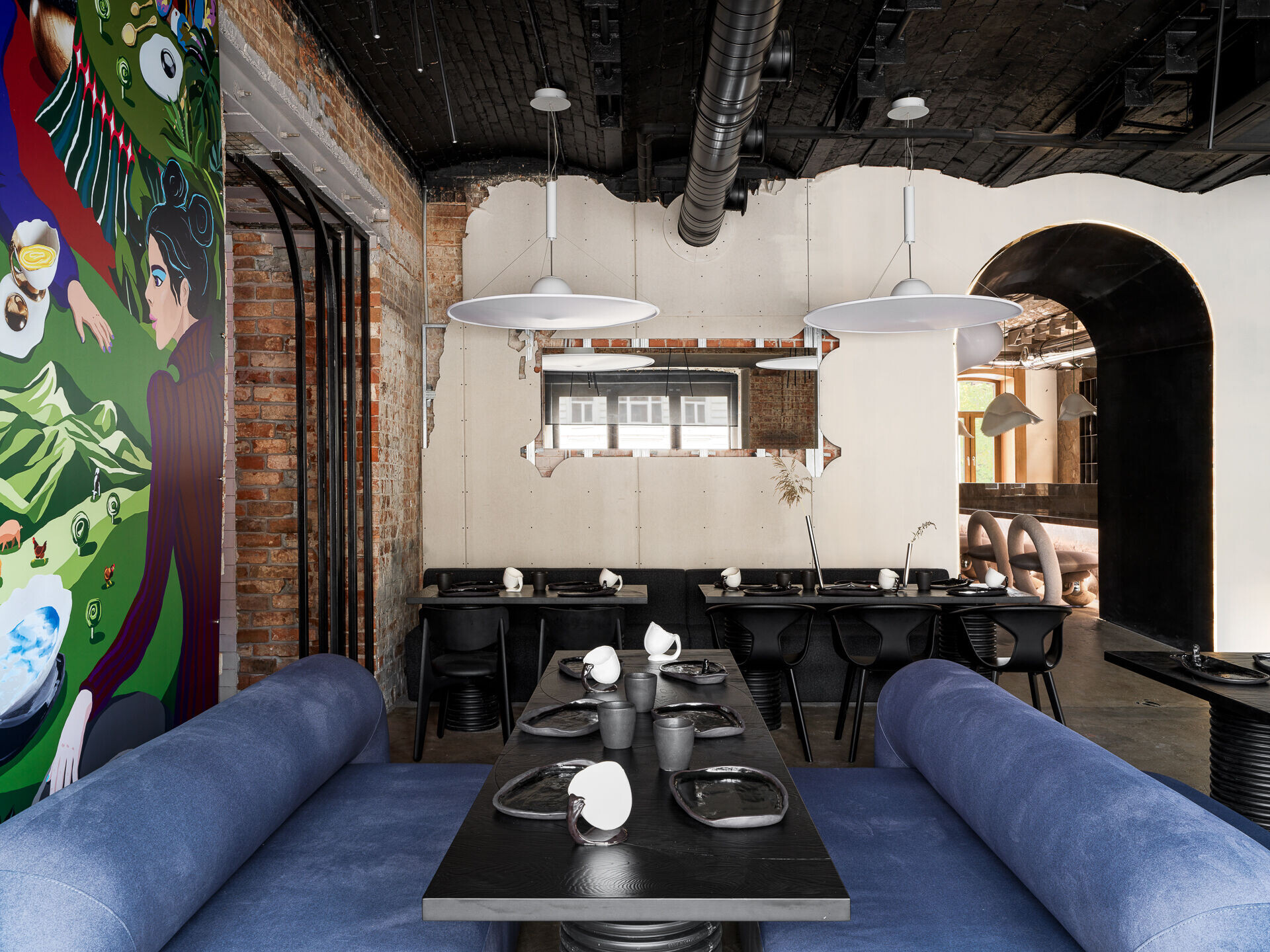
“We wanted to create a place where not only taste receptors but also visual and emotional senses would be stimulated,” says Elena.
Elena’s first visit to the site revealed striking vaulted ceilings of red brick and arched openings, which became the foundation of the design. Collaborating with a team of restoration experts, she revived the arched window openings on the lower level and echoed the motif throughout the restaurant, unifying the space with an elegant, circular rhythm.

Rather than concealing the building’s age, Rybalkina embraced it. Layers of old paint on the walls were preserved, allowing them to narrate their own silent history, while the original lath ceiling remained exposed, encased in transparent polycarbonate and accentuated with signature red and green lighting. The result is an interior that feels both raw and refined, where history intertwines seamlessly with modern design.
The restaurant unfolds across three distinct yet interconnected zones: the central hall, the wine hall, and the street food zone. This fluid layout encourages a natural transition from a leisurely morning coffee to a lively evening over wine.
The 72 m² central hall and 42 m² wine hall are bathed in soft, neutral tones. Here, the design subtly nods to the client’s roots in the agricultural business through a recurring motif — the egg. Its shape inspired custom furniture, textiles, and even decorative wall panels crafted from egg cartons and paired with angled mirrors, creating playful spatial illusions.
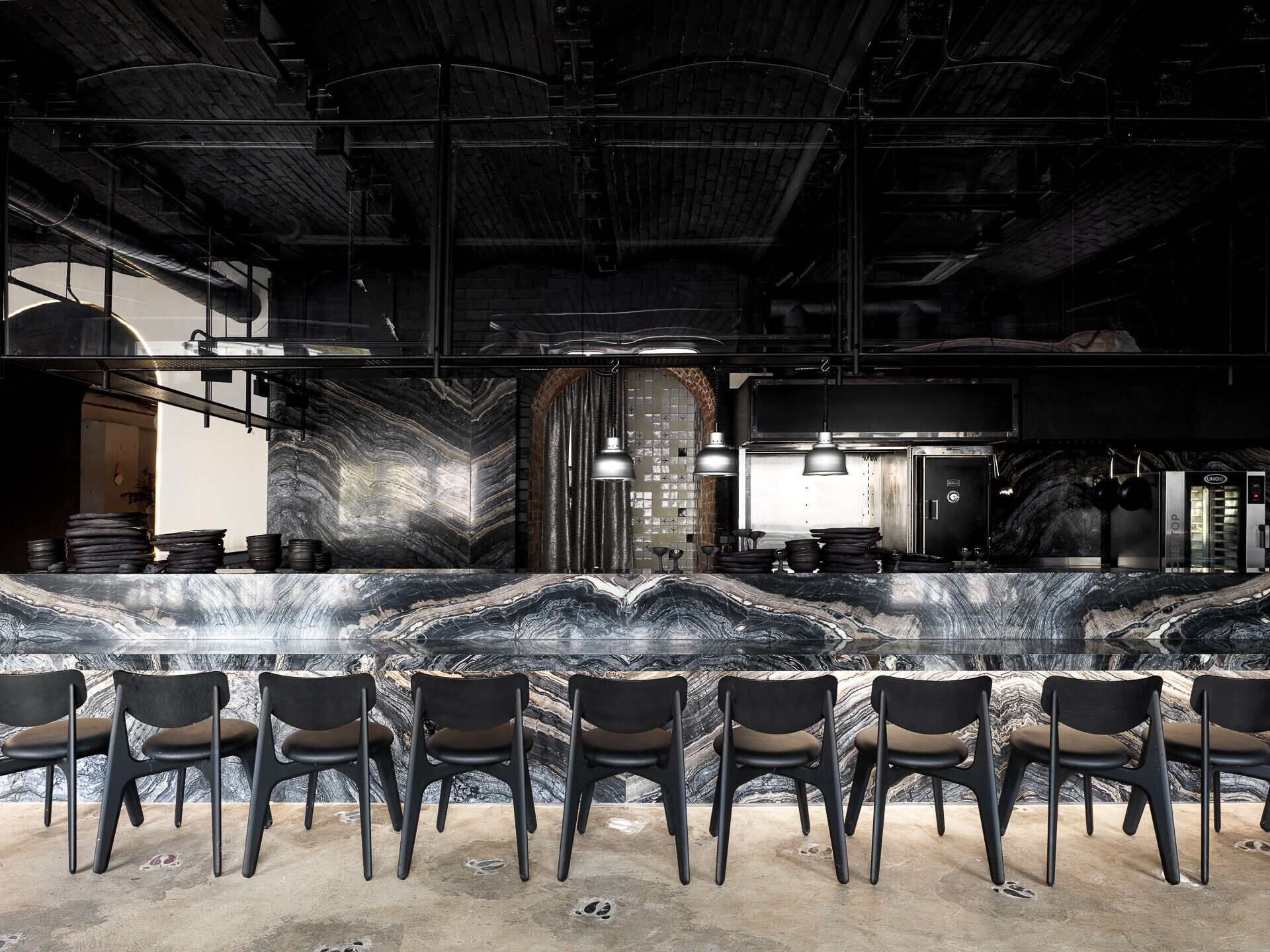
In the street food zone, an industrial aesthetic takes center stage. The 135 m² space thrums with energy, featuring an open kitchen, a hostess station, and a striking 10-meter-long marble bar. The constant movement of chefs, waiters, and guests infuses the space with an electric buzz, reflecting the dynamic pulse of Tomsk’s urban life.
Custom-made furniture by LeafLaurelbyRybalkina — including sofas, chairs, and bar counters—anchors the design. Striking sinks sculpted from acrylic stone inject a bold pop of color, while an arched entrance clad in black metal — a signature of Rybalkina’s aesthetic — commands attention with its sleek architectural presence. The flooring, a fusion of concrete and marble inlay shaped like a pig’s hoof, introduces a playful touch to the sophisticated yet lighthearted design, subtly referencing the gastropub’s meat-centric concept.
Art plays a pivotal role in defining Receptor’s identity. One of the most captivating features is a large-scale narrative painting, a vibrant collaboration between Rybalkina and artist Masha Sumnina of MishMash. This custom piece bursts with color and emotion, becoming the restaurant’s artistic focal point.
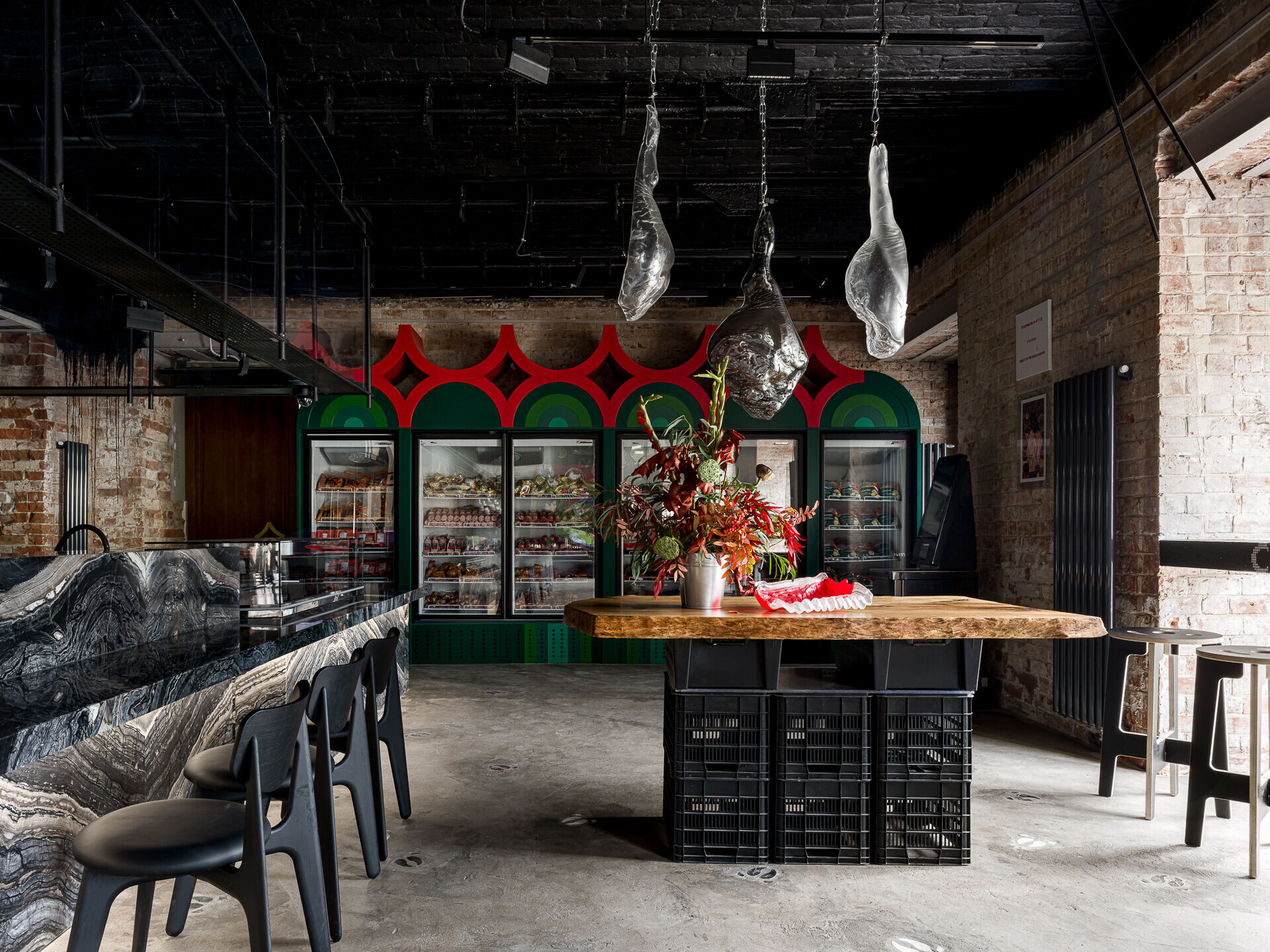
Beyond this centerpiece, the space is enriched with permanent art installations: ceramic objects and textiles from Rybalkina’s LeafLaurelbyRybalkina collection, whimsical chick-themed graphics by emerging artist Diva from Parking, life-sized glass sculptures of ham and ribs by Tamara Shabanova, and witty, everyday-inspired works by Ekaterina Belyavskaya.
Dining at Receptor is as much a visual experience as a culinary one. Rybalkina collaborated with boutique workshops in St. Petersburg, Tomsk, and Moscow to craft a bespoke tableware collection. Each piece — be it porcelain, stoneware, or glass — underwent a meticulous design process, some taking shape effortlessly, others requiring months of refinement.
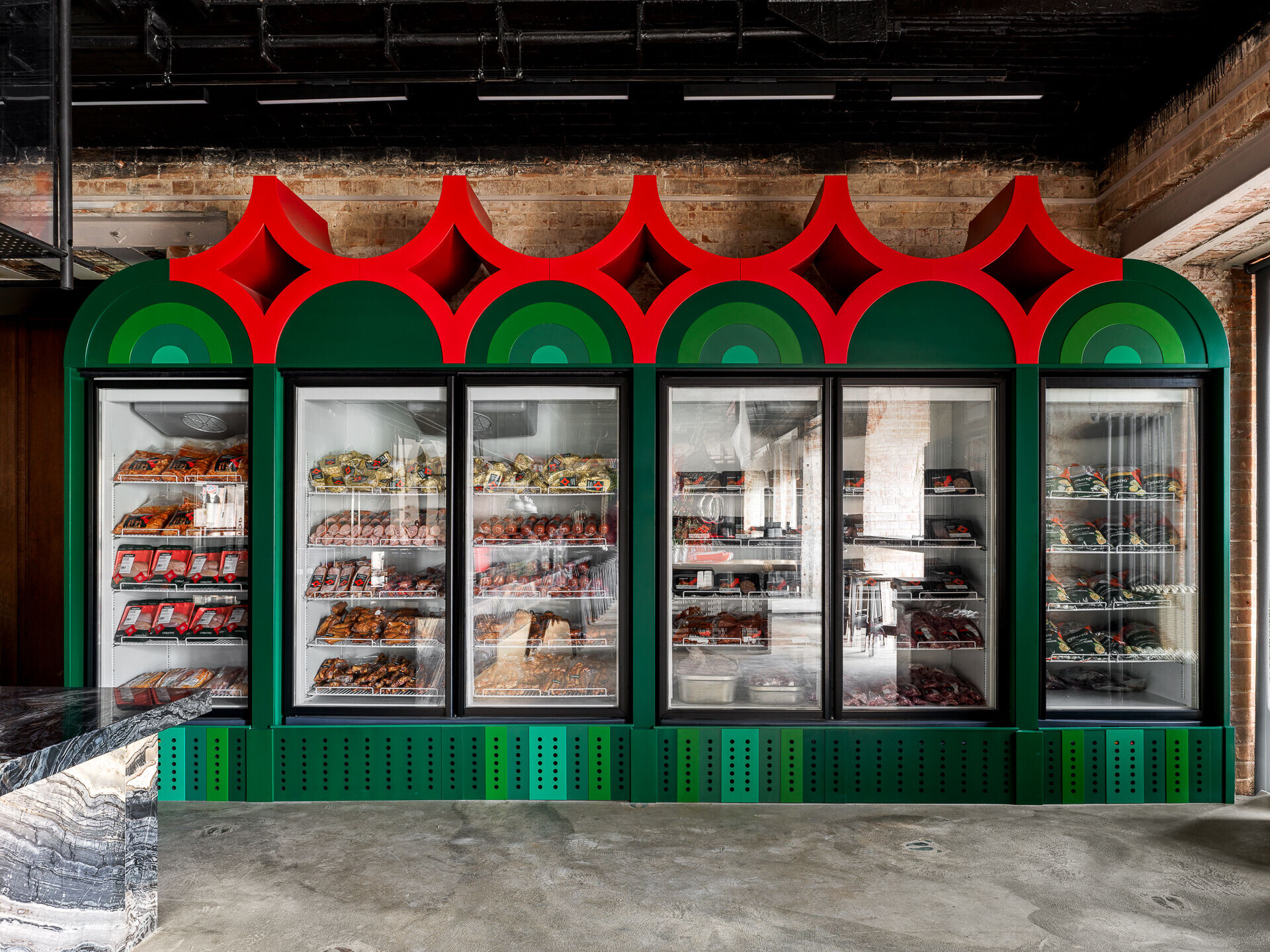
More than just a restaurant, Receptor functions as a cultural hub. True to the “third place” philosophy — a space beyond home and work — it encourages guests to linger, reflect, and connect. The venue hosts rotating art exhibitions, provides coworking areas, and curates a library stocked with magazines on fashion, food, art, and lifestyle.
Interior Designer: Elena Rybalkina
@LeafLaurelbyRybalkina
Photography: Slava Fleor
@Krasyukproduction
